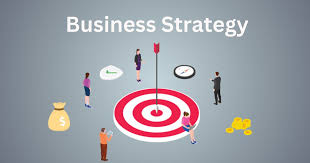The Psychology of Pricing: How to Set Prices That Increase Your Sales
Pricing is and remains one of the most important elements in business, often determining whether a consumer clicks “Add to Cart” or scrolls right past your online store.
Now, how do you make sure that your prices are just right?
Understand the Basics: Why Pricing Matters
– First impressions matter: When consumers first see a price, their perception of value is shaped in an instant.
– The psychological anchors: Studies show humans anchor their expectations and perceptions based on the first piece of information they receive.
– Price vs. Perceived Value: A higher price can communicate quality, while a lower price can suggest lower quality.
As Ernest Hemingway once said, “The best way to find out if you can trust somebody is to trust them.” When it comes to pricing, the trust factor hinges on how you set your prices initially.
The Price is Right… Or is it?
Setting the right price is less about numbers and more about human emotion. Yes, emotion!
– Loss Aversion: People dislike losing money more than they like gaining it.
– The Endowment Effect: Consumers value things more highly when they own them. Ever tried selling an old guitar? They think it’s worth its weight in gold!
– Diminishing Sensitivity: The difference between $99 and $100 feels like a lot more than the difference between $199 and $200.
Understanding these effects can help you set prices that maximize your sales.
Strategies for Pricing Like a Pro
- Charm Pricing: Ending prices in .99 can make consumers feel they’re getting a deal.
– Example: $19.99 vs. $20.00
– Psychology highlights that most of us focus on the first digit.
- Bundling Products: Package related products together to create perceived savings.
– Offer a discount on combined purchases to entice buyers.
– People love feeling like they are “winning” at shopping.
- Decoy Pricing: Introduce a third option that serves no practical purpose other than making the other prices seem more attractive.
– Example: Offer a small, medium, and large, but make medium look like a deal to drive sales toward that option.
- Dynamic Pricing: Adjust prices based on demand, competition, or time.
– Think of airlines and ticket prices—timing is everything.
“Pricing is an art, not a science. The science lays out the facts; the art is in manipulating perceptions.” — Fisher and Nielson, Marketing Analysts.
Tap into Consumer Behavior
To truly understand your customer, you must get into their heads.
– Psychological Pricing: Utilize numbers that feel “complete”, like $199 instead of $200.
– Social Proof: Highlight popular items or best sellers—people buy more when they see others are buying too.
– Emotional Storytelling: People don’t buy products, they buy feelings. Sell the story behind your brand!
According to a study by Simon-Kucher & Partners, 61% of consumers are willing to pay more for better customer experience. Have you ever wondered how much your product’s story adds to—sorry, we mean prices?
The Configuration of Discounts
Discounts can be tricky. Done right, they can elevate sales; done wrong, they can tank perceptions of value.
– Percentage-off vs. Dollar-off: A 20% discount sounds great, but if it’s on an already inflated price, consumers catch on quickly.
– Time-Limited Offers: Scarcity creates urgency. Think “Last Chance” or “Limited Time Offer.”
– “I will have what she’s having”—indeed!
Have you ever seen a sale that was “too good to pass up” but still scratched your head at how that price came to be? Don’t be “that” business.
FAQs
Q1. How do I test the prices I’ve set?
A: Consider A/B testing! Use different prices in different markets and measure changes in sales.
Q2. Should I always offer discounts?
A: Not! Employ discounts strategically. Too many can erode perceived value.
Q3. What if my competitors have lower prices?
A: Instead of racing to the bottom, differentiate your brand. Emphasize quality, service, or unique features.
Q4. How often should I re-evaluate my prices?
A: Regularly! At least once a year or after market changes.
Setting prices is more than just assigning a number. It’s balancing emotion, perception, and strategy.
- Reflect Regularly: Adapt based on consumer feedback.
- Test and Learn: Don’t hesitate to update your pricing strategies.
- Stay Informed: Keep an eye on market trends.
Ultimately, pricing can feel like juggling flaming knives while riding a unicycle—but with the right knowledge, you can make it look as easy as pie.
As Warren Buffett famously said, “Price is what you pay. Value is what you get.” Set prices that reflect consumer perception, so that your sales will soar above expectations. What’s not to love about that? So roll up those sleeves, get into your customers’ heads, and prepare to watch those sales figures rise!










side effects of cialis daily buying cialis in mexico or cialis discount card
http://celinaumc.org/System/Login.asp?id=45779&Referer=http://tadalaccess.com generic cialis from india
cialis wikipedia buying cialis online canadian order and cialis windsor canada cialis coupon 2019
tadalafil vidalista: cialis indications – buy cialis 20 mg online
https://tadalaccess.com/# tadalafil eli lilly
canada cialis for sale cialis and melanoma when to take cialis 20mg
generic cialis online pharmacy were can i buy cialis or cialis sample
https://www.google.com.cu/url?q=https://tadalaccess.com us pharmacy prices for cialis
cialis information cheap cialis canada and walmart cialis price cialis super active
purchasing cialis online: TadalAccess – mint pharmaceuticals tadalafil
cialis before and after cialis tadalafil online paypal or cialis daily vs regular cialis
http://www.google.com.vn/url?q=http://tadalaccess.com tadalafil citrate liquid
online cialis letairis and tadalafil and online pharmacy cialis where to buy cialis online for cheap
cialis effectiveness cialis 30 mg dose cialis tadalafil
https://tadalaccess.com/# free coupon for cialis
overnight cialis tadalafil soft tabs or cialis side effects a wife’s perspective
https://images.google.co.kr/url?q=https://tadalaccess.com why does tadalafil say do not cut pile
cialis with dapoxetine canadian cialis online and snorting cialis cialis paypal
what does cialis treat: cialis after prostate surgery – cialis price south africa
reddit cialis maximum dose of tadalafil difference between sildenafil and tadalafil
cialis for sale online in canada: san antonio cialis doctor – cialis no perscription overnight delivery
https://tadalaccess.com/# cialis generic over the counter
order generic cialis cialis over the counter usa or cialis covered by insurance
http://www.otinasadventures.com/index.php?w_img=tadalaccess.com& walgreen cialis price
buying cialis online cialis not working first time and tadalafil versus cialis canada cialis
buy cialis 20mg TadalAccess where to buy cialis online
buy cialis on line: Tadal Access – cialis walmart
cheaper alternative to cialis can you purchase tadalafil in the us or where can i buy tadalafil online
https://www.google.com.om/url?sa=t&url=https://tadalaccess.com cialis dosage 20mg
what is the difference between cialis and tadalafil? cialis 2.5 mg and cialis savings card cialis 20 mg tablets and prices
where can i buy cialis online what possible side effect should a patient taking tadalafil report to a physician quizlet or cialis not working anymore
https://images.google.com.sv/url?q=https://tadalaccess.com cialis coupon walmart
cialis for bph insurance coverage cialis and dapoxetime tabs in usa and cialis coupon code cialis no perscription overnight delivery
https://tadalaccess.com/# brand cialis
cheap cialis 20mg where to buy generic cialis ? generic cialis tadalafil 20mg india
teva generic cialis: TadalAccess – pictures of cialis pills
cialis trial pack cialis liquid for sale or cialis 5mg cost per pill
https://toolbarqueries.google.com.bn/url?q=https://tadalaccess.com cialis what is it
cialis and poppers no prescription female cialis and canada cialis is cialis a controlled substance
https://tadalaccess.com/# buying cialis online canadian order
cialis buy online cialis sample request form cialis free trial coupon
cialis vs flomax: cialis pills for sale – buy generic cialis online
is there a generic cialis available? tadalafil citrate or cialis otc switch
http://secure.duoservers.com/?lang=en&s_id=123179&rdomain=tadalaccess.com best time to take cialis 20mg
cialis no perscription overnight delivery stockists of cialis and cialis insurance coverage blue cross when will cialis become generic
walmart cialis price: buying cialis without prescription – cialis 20mg review
what is tadalafil made from us pharmacy prices for cialis cialis reviews
cialis san diego where can i buy cialis on line or canada cialis generic
http://toundo.jp/index.php?a=free_page/goto_mobile&referer=https://tadalaccess.com shop for cialis
what is cialis taken for online cialis and cialis 5mg price cvs cialis walgreens
https://tadalaccess.com/# cialis generic
tadalafil (megalis-macleods) reviews cialis difficulty ejaculating or buy cialis without doctor prescription
https://www.google.ws/url?q=https://tadalaccess.com::: tadalafil generic headache nausea
cialis generic name what is cialis taken for and tadalafil long term usage tadalafil citrate liquid
cialis 5mg coupon: Tadal Access – tadalafil ingredients
brand cialis with prescription TadalAccess online cialis australia
https://tadalaccess.com/# tadalafil vidalista
Unquestionably believe that which you stated. Your favorite reason seemed to be on the internet the simplest thing to be aware of.
I say to you, I definitely get irked while people think about
worries that they just don’t know about. You managed
to hit the nail upon the top and defined out
the whole thing without having side effect , people can take a signal.
Will likely be back to get more. Thanks
Ero Pharm Fast: Ero Pharm Fast – Ero Pharm Fast
get ed prescription online Ero Pharm Fast Ero Pharm Fast
online erectile dysfunction pills: Ero Pharm Fast – best online ed meds
buy antibiotics for uti: Biot Pharm – buy antibiotics over the counter
Ero Pharm Fast: Ero Pharm Fast – Ero Pharm Fast
https://pharmau24.com/# Medications online Australia
get ed meds online Ero Pharm Fast cheap ed drugs
cheap ed pills online: Ero Pharm Fast – online erectile dysfunction prescription
top rated ed pills: Ero Pharm Fast – buying ed pills online
PharmAu24: Buy medicine online Australia – online pharmacy australia
http://biotpharm.com/# cheapest antibiotics
cheapest antibiotics: buy antibiotics online – over the counter antibiotics
buy antibiotics Over the counter antibiotics pills or Over the counter antibiotics for infection
https://maps.google.it/url?sa=t&url=https://biotpharm.com buy antibiotics from india
antibiotic without presription buy antibiotics over the counter and buy antibiotics over the counter buy antibiotics over the counter
Ero Pharm Fast: Ero Pharm Fast – ed medications online
https://biotpharm.shop/# get antibiotics quickly
how to get ed pills Ero Pharm Fast cheap boner pills
Buy medicine online Australia Medications online Australia or online pharmacy australia
https://www.google.com.gi/url?sa=t&url=https://pharmau24.shop Pharm Au24
online pharmacy australia Online drugstore Australia and Pharm Au 24 Pharm Au24
Ero Pharm Fast: buy ed meds online – online ed medicine
pharmacy online australia: Pharm Au24 – Pharm Au 24
online ed meds low cost ed meds or buy ed pills online
https://www.google.gp/url?q=https://eropharmfast.com buy erectile dysfunction pills
edmeds cheap ed drugs and ed pills cheap boner pills
http://eropharmfast.com/# best online ed pills
online ed treatments: ed online meds – ed online pharmacy
Ero Pharm Fast: erectile dysfunction medications online – discount ed meds
cheapest erectile dysfunction pills Ero Pharm Fast Ero Pharm Fast
buy antibiotics over the counter antibiotic without presription or antibiotic without presription
https://www.google.im/url?q=https://biotpharm.com buy antibiotics over the counter
over the counter antibiotics buy antibiotics and antibiotic without presription Over the counter antibiotics for infection
buy antibiotics online: BiotPharm – get antibiotics quickly
Medications online Australia: pharmacy online australia – Buy medicine online Australia
Online drugstore Australia Licensed online pharmacy AU or Online drugstore Australia
https://cse.google.no/url?q=https://pharmau24.shop Buy medicine online Australia
Buy medicine online Australia PharmAu24 and Pharm Au 24 Pharm Au 24
online erectile dysfunction medication edmeds or cheapest ed treatment
https://www.google.com.jm/url?q=https://eropharmfast.com online ed pills
where can i get ed pills ed prescription online and ed medicine online ed treatments online
cheap ed medication: ed online treatment – pills for ed online
https://biotpharm.com/# get antibiotics quickly
Buy medicine online Australia: pharmacy online australia – Buy medicine online Australia
Pharm Au 24 Online medication store Australia Pharm Au24
buy antibiotics for uti over the counter antibiotics or Over the counter antibiotics pills
https://clients1.google.com.vc/url?q=https://biotpharm.com best online doctor for antibiotics
buy antibiotics over the counter get antibiotics without seeing a doctor and cheapest antibiotics buy antibiotics for uti
best online ed medication get ed prescription online or ed medicines online
https://bbs.clutchfans.net/proxy.php?link=https://eropharmfast.com:: ed doctor online
get ed meds today online ed meds and discount ed pills ed treatments online
ed meds by mail cheap ed treatment or cheap ed treatment
http://nimbus.c9w.net/wifi_dest.html?dest_url=https://eropharmfast.com erectile dysfunction medicine online
cheap erection pills cheapest ed treatment and erectile dysfunction drugs online cheapest erectile dysfunction pills
get antibiotics quickly get antibiotics without seeing a doctor or antibiotic without presription
https://toolbarqueries.google.com.vn/url?q=https://biotpharm.com get antibiotics without seeing a doctor
buy antibiotics buy antibiotics for uti and buy antibiotics from canada buy antibiotics from canada
x1bw53
fz04wk
e3eouk